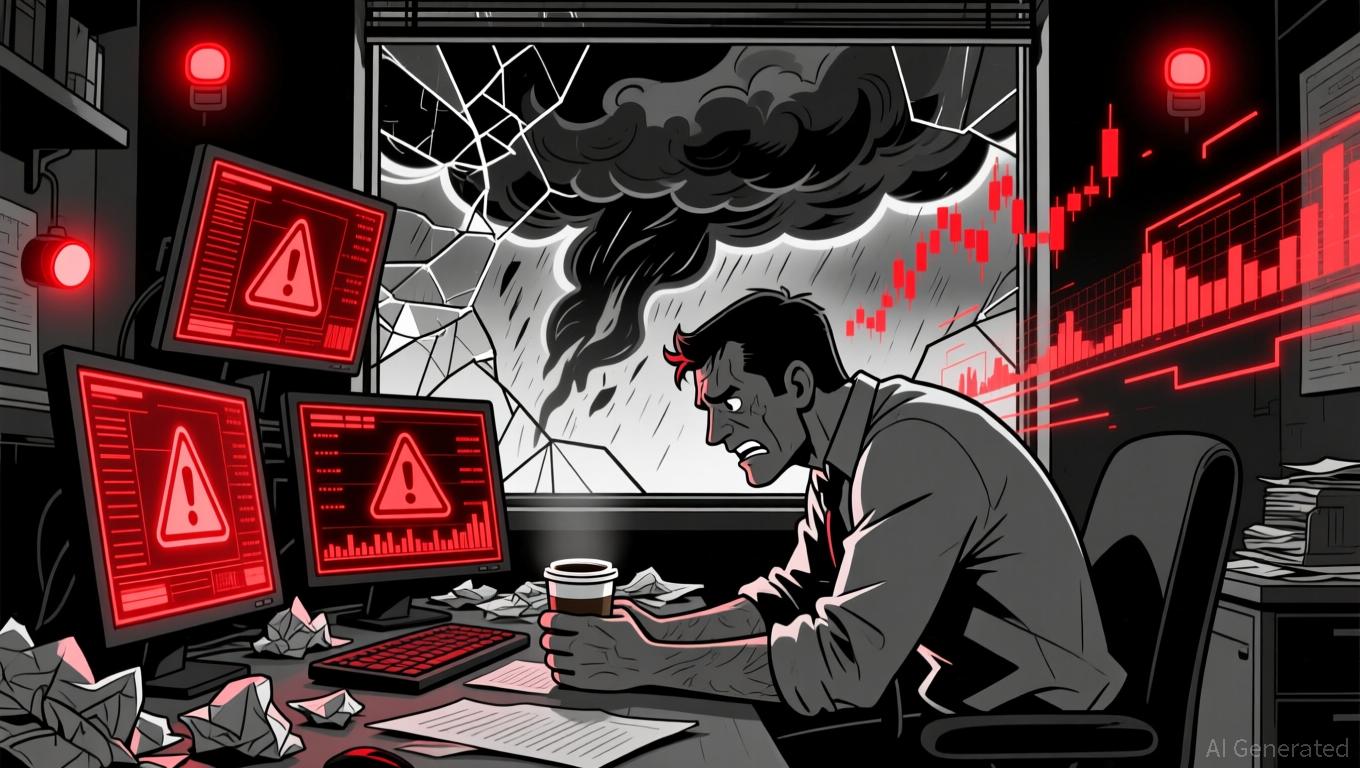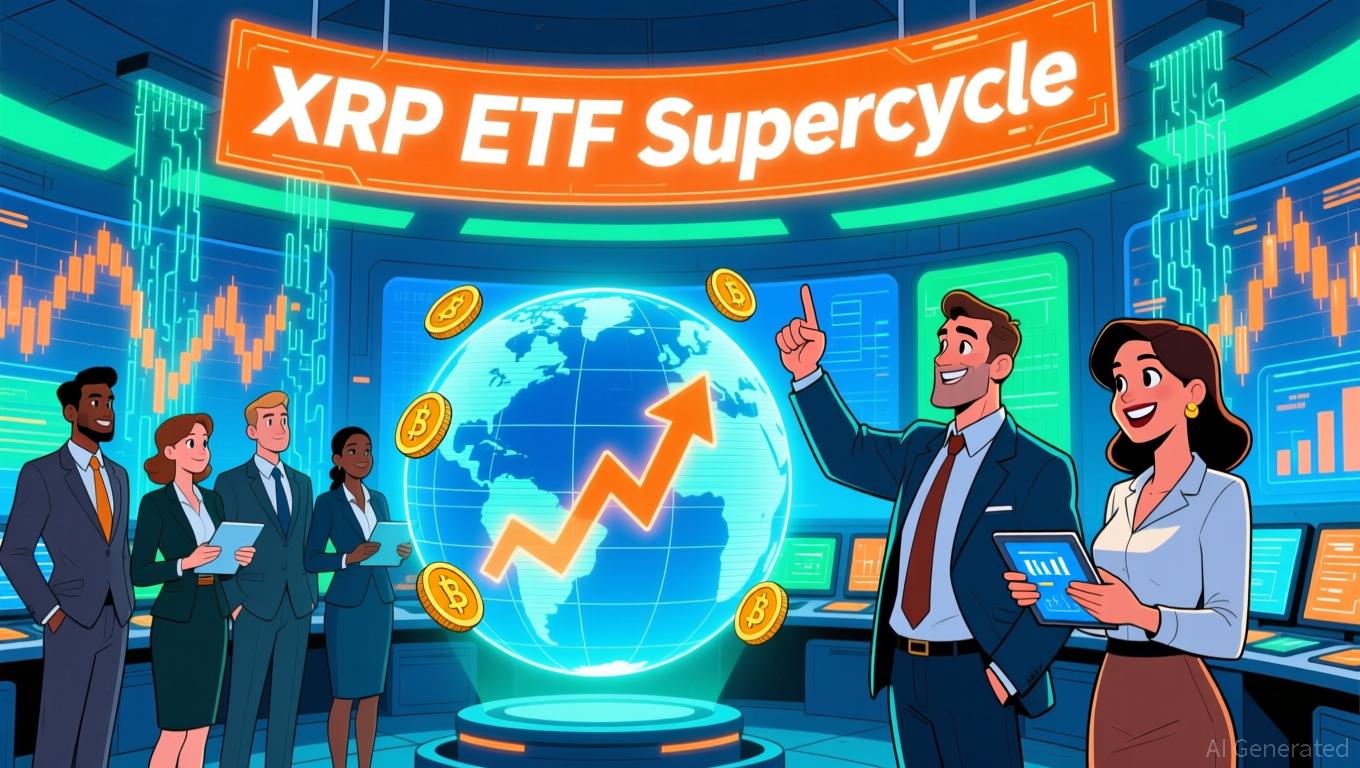SOL's Steep 150% Value Decline Projected for Early 2025: An Examination of Core and Broader Economic Risks
- Solana (SOL) crashed 150% in early 2025 due to technical flaws, validator outages, and macroeconomic/regulatory risks. - March 2025 validator outages exposed Solana's RPC node overload vulnerability, eroding confidence in its fault tolerance. - Validator count dropped to 900 by 2025 from 2,500 in 2023, increasing systemic fragility during high-traffic periods. - Regulatory ambiguity and Fed policy shifts disproportionately hurt Solana compared to Bitcoin/Ethereum's clearer adoption paths. - The crash for
Technical Weakness and Validator Failures: The Making of a Crisis
The immediate spark for SOL’s sharp fall was a succession of validator failures from January to March 2025, peaking with a major disruption on March 17. OKX reported that
Supporters of Solana point out that the network had maintained uninterrupted service for 16 months before these failures, highlighting its durability. However, the March event revealed how vulnerable the system could be under simultaneous stress.
Worsening the situation was a significant drop in the number of validators, which
Macroeconomic and Regulatory Pressures: The Broader Context
In addition to technical setbacks, larger economic and regulatory forces intensified the sell-off.
The direction of the Federal Reserve was especially influential. Higher interest rates and inflation worries limited speculative investments, pushing investors toward assets with more regulatory certainty. Despite Solana’s technological strengths, its lack of institutional backing and regulatory clarity made it more vulnerable to sell-offs and cautious sentiment.
Although regulatory action was
Shifting Investor Attitudes and Risk Strategies
The upheaval in early 2025 led to a major shift in how risk is managed throughout the crypto world. Both individual and institutional investors began to focus more on network stability and regulatory compliance than on raw performance. For Solana, the March network failure and shrinking validator pool forced a reassessment of its core strengths. Although
Investor mood also became more conservative. The steep 150% drop wiped out years of profits for many, leading to widespread liquidations and margin calls. This deepened negative sentiment, as worries about more technical failures or regulatory actions drove capital into safer assets like Bitcoin and Ethereum.
Opportunity or Red Flag?
Whether the 2025 crash is a chance for long-term investment depends on two main factors: progress on technical upgrades and regulatory developments. Technically, Solana’s community has shown it can adapt.
On the regulatory side, the lack of a definitive framework remains a significant threat. While Solana’s emphasis on tokenizing real-world assets and advancing DeFi could position it for future growth, its sensitivity to economic cycles and regulatory ambiguity is a persistent risk. For those with a long-term outlook, the downturn might offer a chance to invest in undervalued infrastructure, but only if they are ready to endure further instability.
Conclusion
The 150% plunge in SOL’s value in early 2025 was not an isolated incident, but rather a reflection of deeper, systemic issues. The convergence of technical frailty, validator losses, and adverse macroeconomic trends created a perfect storm, revealing the vulnerabilities of even top-performing blockchains. While Solana’s ecosystem has begun to address these challenges, the broader crypto landscape remains fraught with risk, where technical prowess alone is not enough. The key takeaway for investors: in a time of regulatory flux and economic uncertainty, resilience—not just speed—will determine which projects endure.
Disclaimer: The content of this article solely reflects the author's opinion and does not represent the platform in any capacity. This article is not intended to serve as a reference for making investment decisions.
You may also like
Bitcoin Drops 1.11% as Multi-Chain Growth Accelerates and New Regulatory Measures Emerge
- Bitcoin .ℏ integrates Hashport for cross-chain transfers, boosting liquidity and DeFi accessibility across Ethereum , Polygon, and BNB Chain. - U.S. proposes "Bitcoin for America Act" to allow tax payments in BTC, eliminating capital gains tax and positioning crypto as strategic national asset. - BTC price drops 1.11% amid $3.79B ETF outflows, with technical indicators like death cross signaling extended bearish momentum. - Whale activity shows leveraged long positions at $84,400, contrasting short-term

XRP News Update: XRP ETFs Debut Amid Price Decline: Institutional Optimism Faces Market Slump
- Four major asset managers-Franklin Templeton, Bitwise, 21Shares, and CoinShares-are launching spot XRP ETFs between November 18-22, signaling institutional confidence despite XRP's price drop below $2. - Franklin Templeton's $1.5T AUM entry and Bitwise's $22M trading volume highlight XRP's growing legitimacy in traditional finance, while 21Shares and CoinShares aim to boost liquidity through U.S. regulatory clarity. - Market reactions are mixed: XRP fell to $1.85 amid crypto downturn and whale selling (2

The Emergence of ICP Caffeine AI: Is It Shaping the Future of AI-Driven Productivity?
- DFINITY Foundation's ICP Caffeine AI repositioned as an AI cloud engine to capture the $1T cloud services market, leveraging natural language programming and a "chain-of-chains" architecture. - This shift drove a 56% ICP token price surge and partnerships with Microsoft and Google Cloud, despite a 22.4% Q3 dApp activity decline. - The platform's $237B TVL and cost-efficient AI inference for financial institutions position it against SaaS rivals like Palantir , though regulatory risks and scalability chal